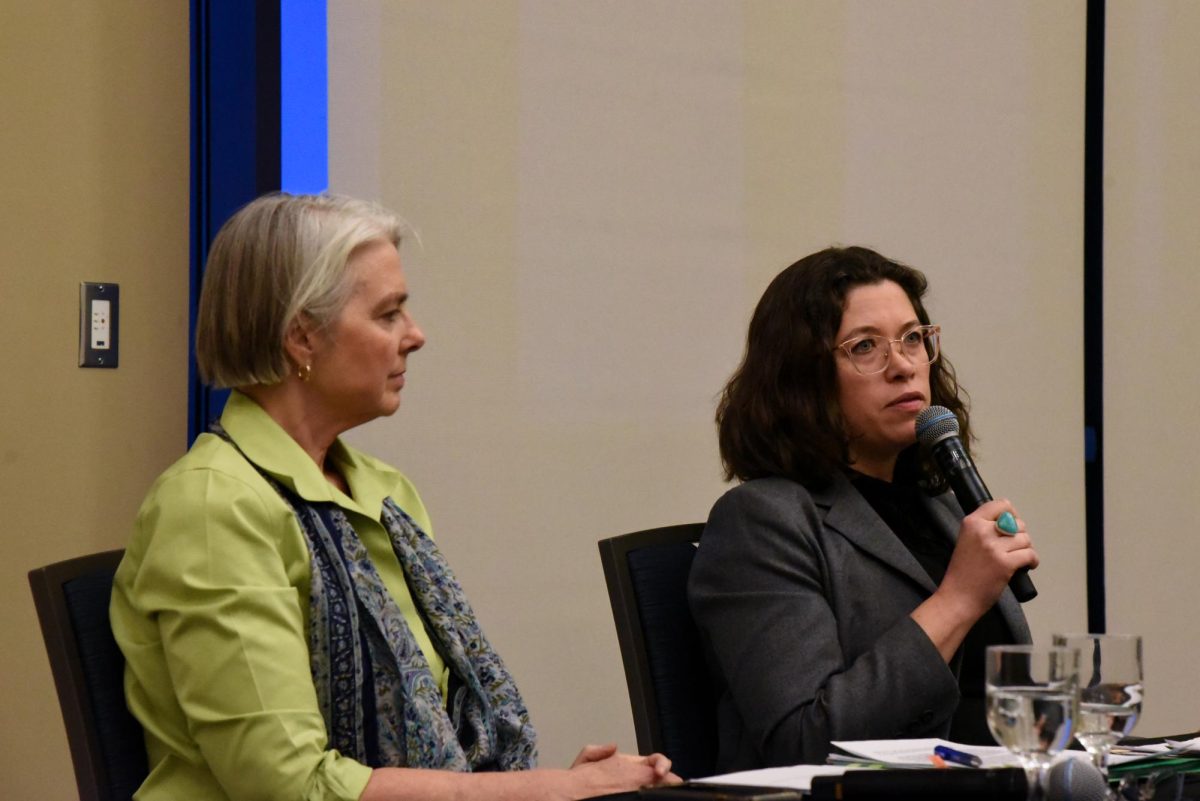Vitaly Komar’s thick Russian accent reverberates at the Firehouse Gallery as he describes his work and life, pointing to different slides of his artwork. The room is dimly lit, and the clicking of the slides mixes with the whirr of the projector. The audience laughs at every tongue-in-cheek joke he tells. “I like listening to his voice,” Ryan Guthrie, a junior at UVM says. “It’s like a character out of a book.” Komar is well known for founding Sots Art, a form of Soviet Non-Conformist art that combines elements of Socialist Realism and American Pop Art. “Sots Art was a kind of ironical iconoclasm,” Komar states in his most recent catalogue. This mix of two very different styles is immediately evident in his paintings, especially those satirizing the red background, white lettering and exclamation points that were so characteristic of propaganda during Komar’s childhood. In his paintings, there are no letters, only ambiguous white squares. “We were surrounded by such propaganda… it was everywhere – in the streets, factories, barber shops,” Komar says. Komar’s revolutionary art has often gotten him in trouble. He reminisces about his first “Open Air” show, and the events surrounding it. “We were very idealist,” Komar says. “I didn’t believe that anything bad would happen; somebody came, I believe the police, and they destroyed a lot of our works. It was the most exciting time.” Experiences like these with the government influenced Komar to add double meanings to a lot of his artwork. “It’s abstract art, but there’s something behind it,” he says. This influence is seen in Komar’s transformation of an article of the Soviet Constitution into musical notes and colored dots. When looking at the art, it is just another abstract painting, but if one realizes that each color and each musical note represents a different letter, the “double-meaning” is revealed. Komar’s art is not just limited to paintings, and has also manifested itself by incorporating live animals into the creative process. “Animals are much more closer to us that we think,” Komar says. He has worked with chimpanzees and elephants, using them for photography and painting, as a way to give the animals a creative voice, he says. Komar’s newest conceptual art is his “Three-Day Weekend” project. Combining holy images with holy days from Islam, Christianity, and Judaism, Komar portrays the need for religious unity. But he jokes about the situation, referring to each religion’s respective holy day, saying, “Someday soon, we’ll have a three-day weekend. I believe all of us must support this program.” A radical artist, by definition, must mock social institutions, and Komar started his first real capitalist venture by creating a company for the “buying and selling of souls.” The first man to sell his soul for nothing was renowned artist Andy Warhol, according to Komar. Komar says he eventually ran out of business because “a lot of people like to sell souls, but no one likes to buy them.” Thus, he has ended his presentation of conceptual art, after mocking and satirizing former Soviet institutions, and even American popular culture. The last slide Komar shows is his ideal American Flag: red and white stripes, a blue square in the upper-left corner, and an entire galaxy instead of just 50 stars. “More stars for all of us,” Komar says.












